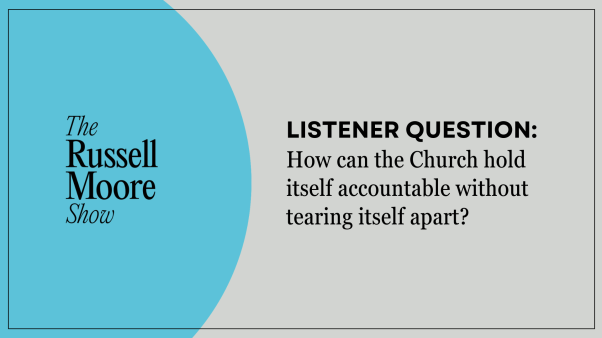The Ominous Future Of Protestantism
Secular Christianity, by Ronald Gregor Smith (Haper & Row, 1966, 222 pp., $5), is reviewed by John A. Mackay, president emeritus, Princeton Thelogical Seminary, Princeton, New Jersey.
This book by a distinguished Scottish theologian, an admirer and devoted disciple of Rudolf Bultmann, witnesses to a present-day fact that is both tragic and ironic. At a time when Roman Catholics throughout the world are rediscovering dimensions of the Christian faith they had lost, and when the dynamic faith of Pentecostals in maturing and becoming increasingly relevant to basic issues in the secular order today, evidence grows that main-line Protestant denominations are losing the Christian insight and spiritual vigor that produced the movement that gave them birth.
In this volume we have an intellectual symbol of a decline that gives growing concern, and of ominous portents on the horizon of tomorrow. The concern I have in mind is this: The evangelical dimension of Christianity—using the term “evangelical” in no sectarian or other-worldly sense but as expressive of the luminous and dynamic core of the Christian religion—is tending to become disdained and abandoned in traditional Protestant circles.
Here is the basic thesis of Secular Christianity: We do not know whether history has a meaning or, if it does, what that meaning is. But we humans, if we so desire, can give history a meaning. And today is the historical moment when the “secular,” in its fullest dimension, must be accorded precedence over everything that has been traditionally associated with the “religious.”
Smith’s reasoning is this. History’s chief event is the “paradoxical reality of Christ,” who symbolizes, in his life and death, “the forgiving act of God and the meaning of love as powerless self-giving.” The resurrection of Christ, the author says, is to be regarded not as an objective happening but rather as “the symbol of the new life, a way of affirming the forgiving act of God.” Those who take this act of forgiveness seriously must become “people for others,” wedded to “secularity.” Only out of this wedlock can true meaning be given to history, so far as Christians and the Christian Church are concerned.
Let us be quite clear on a crucial point. The basic issue involved here is not the historical relation between Christianity and the secular order nor what that relation should be if Christians take their calling seriously. It is rather whether the relation between these two realities must involve, as Professor Smith demands, that we “demythologize” God as the decisive absolute in history and at the same time “divinize” man, who in becoming a “being for others” becomes thereby the creator and goal of the future.
According to this view, God, following his act of forgiveness in Christ, remains “incognito,” so far as human history is concerned. He is not a living power or presence through contact with whom a human being can experience “conversion” or enjoy “fellowship,” in the biblical connotation of these terms. God cannot therefore be made the meaningful center of a theological system founded upon his self-disclosure and the revelation of his purpose for mankind, “according to the scriptures.”
In consequence of this, creeds and confessions become meaningless. Man is solely and absolutely responsible for his own history. “Evangelism” has no validity. The missionary concept is utterly outdated. The Church as the community of faith has no real basis for its existence. Inasmuch as the sole absolute is “modern man,” the supreme role of a “Christian” is to become involved in “modern man’s” life and relations, but without in any way seeking to relate him to a living, redemptive Presence.
Secular Christianity presents a twofold challenge to all who take seriously the evangelical core of the Christian religion. First, Christians must have a theology that is centered in the crucified and risen Christ but is at the same time relevant to the total problem and concern of “modern man.” Second, they must themselves become truly incarnate in contemporary reality, not as “gods,” but with the supreme objective of making Christ and a community of Christians a meaningful and potent reality in the world of our time.
Reading for Perspective
CHRISTIANITY TODAY’S REVIEW EDITORS CALL ATTENTION TO THESE NEW TITLES:
• The Other Son of Man: Ezekiel/Jesus, by Andrew W. Blackwood, Jr., (Baker, $3.95). Blackwood relates Ezekiel’s message to current problems and considers the prophetic background of Jesus’ designation as the “Son of Man.”
• Christian Reflections, by C. S. Lewis (Eerdmans, $3.95). The devout faith and brilliant intellect of the late Cambridge scholar and Christian apologist illuminate vital topics of culture and religion. A must for C. S. Lewis enthusiasts.
• Theology of the English Reformers, by Philip Edgcumbe Hughes (Eerdmans, $3.95). A compendium of writings by English reformers (e.g., Tyndale, Latimer, and Cranmer) that shows the biblical basis of their teachings.
The Knowledge Of God
Between Faith and Thought: Reflections and Suggestions, by Richard Kroner (Oxford, 1966, 203 pp., $4.95); The Saviour and the Scriptures, by Robert P. Lightner (Presbyterian and Reformed, 1966, 170 pp., $3.75); and God’s Word Written: Essays on the nature of Biblical Revelation, Inspiration, and Authority, by John C. Wenger (Herald, 1966, 159 pp., $3.50), are reviewed by R. Laird Harris, dean and professor of Old Testament, Covenant Theological Seminary, St. Louis, Missouri.
The Reformers taught that faith could be analyzed into knowledge, assent, and trust. Kroner, adopting a usual post-Kantian dichotomy, suggests that one must choose between faith and knowledge as a basis for religious belief. Faith is contrasted at every point with knowledge. The way to know God is the way of mystical belief, where both knowledge and speculation fail.
Kroner, a German refugee from Hitlerism, taught at Union Seminary in New York and at Temple University in Philadelphia. He may be classed in the general neo-orthodox tradition. His analyses of Barth, Tillich, Heidegger, and others are capable and helpful, though brief. Kroner argues that just as the methods of natural science do not uncover all reality, so the speculations and thought of philosophy do not exhaust the remaining areas of truth. Some truths—specifically truths of God—can be reached only by reflection and the experiences of faith.
Kroner claims that life is full of absurdity that can be made acceptable to men only by faith—not by complex rational or dogmatic systems like Hegel’s and Barth’s. God is hidden. We can only trust in the “ultimate guarantor of meaning.” “True mysticism is truly religious.” But Kroner’s god must be spelled without the capital letter. “God … should not be conceived as being.” He is “not outer being.” God “does not dwell in a transcendent place outside us, except in metaphorical language.” Indeed, Kroner cannot conceptualize his god at all. One may well ask whether such a god can be maintained; is this not a long step toward a god who is dead?
By calling language in the Bible metaphorical, Kroner demythologizes as much as Bultmann. The eternal is not endlessness, he says, but a kind of “superanimal being.” Jesus is on a plane with Buddha, Mohammed, and others, but he is higher. “Jesus is called ‘Son of God’ because of his most intimate relation to God.” Of course, Jesus is not the God-man of orthodox theology. “The compassion with which Jesus meets the sinner is supermoral; it is the divine feature in him.” Man’s immortality is affirmed, but survival after death is denied; immortality turns out to be only meaningful life here and now. The resurrection of Jesus is only an image of reality. And “the image of resurrection does not correspond to any physical or historical fact.” No attempt is made to treat the biblical evidences for miracles seriously. We are left with no after-life, no knowledge of God, no really truthful revelation. Faith becomes a feeling that there is a “guarantor of ultimate meaning.” As the quip goes, one may now pray that the “guarantor of ultimate meaning” will bless you real good!
It is a relief to turn to the books of Lightner and Wenger. These authors do not take up the problems touched by Kroner but rather give a positive and helpful discussion of the origin of Scripture and its truthfulness.
Lightner’s book is popular and useful but mainly traverses ground others have already gone over. He rightly grounds inspiration—verbal inspiration—in the witness of Christ, giving the exegetical evidence rather fully. His special contribution is a consideration of opposing views—neo-orthodox, liberal, and new evangelical. The neo-evangelical denials of verbal inerrancy come in for special attention.
More solid, though perhaps not quite so strict, is the work of Wenger, who not only brings a fresh approach to the authority and truth of Scripture but also offers helpful discussions of interpretation, textual criticism, and the history of the English Bible. The book is very well written and full of a wealth of illustration and interesting sidelights that make the reading a pleasurable and profitable experience.
Heavy-Handed Inferences
The Theological Tendency of Codex Bezae Cantabrigiensis in Acts, by Eldon Jay Epp (Cambridge, 1966, 210 pp., $8.50), is reviewed by Clark H. Pinnock, associate professor of theology, New Orleans Baptist Theological Seminary, New Orleans, Louisiana.
This third in a series of monographs projected by the Society for New Testament Studies is a model of careful scholarship. The author reveals intimate knowledge of the intricacies of textual criticism and history. The weakness of the work lies in the somewhat heavy-handed theological inferences drawn from often minute variations in the Western Text. Earlier studies into the peculiarities of Codex Bezae contented themselves with assessing the historical worth and originality of textual variants. Less attention was given a possible bias in the editor that might have prompted his interpretive changes. Professor Epp believes that a large number of deviations in the Western tradition ought to be explained on theological, rather than mechanical or historical, grounds. The common denominator to these variations can be uncovered by postulating an anti-Judaic bias on the part of the editor. Previously, scholars like J. H. Ropes, F. J. A. Hort, and Th. Zahn had attributed the changes to other causes than deliberate falsification for dogmatic purposes; e.g., two authentic versions of Acts itself, explanatory expansions, Semitic backgrounds.
The thesis here is not altogether new (P. Corssen noted some anti-Jewish tendencies in the Western Text of Acts in 1896), but it has never been presented before in so thoroughgoing a manner. “The present study takes this anti-Judaism as its focal point,” Epp says. The pursuit of this thesis is a worthy one, but at times the momentum of argument places heavy strain upon fragile lines of evidence. Codex Bezae has in the past produced some novel theories to account for its existence, as the author admits, and the reader is left wondering about the finality of this latest novelty.
The anti-Judaic tendency in Codex Bezae appears in three dimensions; (1) the text portrays the Jews and their leaders as more hostile toward Jesus than does Vaticanus; (2) the text devaluates the importance of Judaism in the origins of Christianity; (3) the text puts more stress on the hostility of the Jews to the Gospel. “In short, the Jews come out rather poorly in the D-text” (p. 166).
Much of the evidence for these conclusions, however, exists only in the field of Epp’s microscopic vision. Does the addition of ponerion in Acts 3:17 show a bias, or does it merely expand the sense of B-text? Has the omission of humon from Acts 2:38 really altered the sense into a direction of greater universalism? Even the famous change from “people” to “world” in Acts 2:47 reflects no bias but simply expresses the thought of tout le monde (a French expression for “everybody” which has an exact parallel in Jewish Aramaic). When Epp explained the frequent addition of kyrios as a slap in the face of non-believing Jews, I began to lose sympathy with the whole effort. Even the addition of “by you” to a verb that implies it anyway in Acts 4:9 is supposed to heighten the fact that the leaders of Israel were not pleased with the early success of the Christian mission. Such imaginative form of innocent textual variants leading to so bold a conclusion does not sit well with otherwise painstaking scholarship. If earlier students did not pause to give the possibility of an anti-Judaic bias in Codex Bezae a fair hearing, then an avenue of investigation was overlooked. But cure like this is as bad as the disease. For in this approach, an assumed theological bias is made an absolute, before which even the facts must humbly bow. A great deal can be “proved” by this means—to the satisfaction of a very few.
Unsilent Women In The Church
Women in the World of Religion, by Elsie Thomas Culver (Doubleday, 1967, 340 pp., $5.95), is reviewed by Margaret Johnston Hess, minister’s wife and Bible-class teacher, Detroit, Michigan.
Anyone who has taken it for granted that woman’s position in America today is one of comfortable equality can learn much from this book about other times, other places where woman has been more “equal”—or less so. Mrs. Culver, an ordained Congregational minister who for fourteen years was director of public relations for the World Council of Churches, has written a book of closely packed facts about the history and present status of women in religion, from pagan priestesses to modern ecumenical delegates.
The book is thoroughly researched and well-documented; the author has a mind of remarkable scope and a broad background.
The value of the book for an evangelical is marred by the author’s critical view of the Scriptures. She has some fresh insights into the place of women in the Bible, especially in her treatment of the New Testament, but the chapter on the Old Testament is scarcely worth wading through.
However, this is only a small part of the book. There are also some twenty chapters that deal with attitudes toward women in the ancient fertility cults, in the Apocrypha, during the early centuries of the Church, and after the break-up of the Roman Empire. Mrs. Culver describes the rise of woman’s position in the eleventh century and the decline under Luther and Calvin.
One familiar with the modern church scene reads about Luther’s and Calvin’s attitudes toward women with a shock of recognition. At this point the book picks up speed, showing the strange and varied strands that make up the not wholly equal—nor wholly biblical—position of women in our churches today.
This book would be stimulating to anyone interested in using women’s talents to greatest effectiveness in the church—provided the reader compensates for the theologically liberal viewpoint.
The author is not violently feminist. She calmly states and effectively supports her thesis that the Church is the poorer when it does not encourage women to use in the Church whatever talents God has given them.
Response To Vatican Ii
Challenge and Response: A Protestant Perspective of the Vatican Council, edited by Warren A. Quanbeck (Augsburg, 1966, 226 pp., $5), is reviewed by Charles A. Bolton, former Roman Catholic priest, now a Protestant teacher and preacher.
There is a refreshing candor in most of the ten essays of this survey of the recent Vatican Council. The message of the Reformation is again proclaimed with a pacific and sincere intention. Most of the authors carry with ease a theological or historical erudition and show themselves to have a real understanding of the Roman Catholic position. It is good to have Luther’s words repeated with a new if gentle emphasis. The authors claim that the best possible unity at present is “the unanimous testimony of brethren to Jesus Christ the Lord.” We should not forget, however, that the council speaks of “separated brethren.”
The book begins with a short account of the fourth and last session in 1965. Then follow seven evaluations of some of the main declarations of the council. Kristen E. Skydsgaard contributes a valuable review of “Scripture and Tradition.” He quotes usefully from Luther about Scripture as the living word of God, derived from the faith of the apostolic Church, and needing always to be interpreted within the context of a living church tradition. “Biblicism” is not enough; yet ecclesiology and tradition can be equally dangerous, as some of the more restive Roman theologians are well aware. “There can be no ecclesiology and that means no doctrine of tradition apart from the knowledge of the constant threat of the Antichrist.” Skydsgaard is afraid that too much traditional theology of the Roman school is in a magic circle that cannot be broken—it involves some Scripture but more of tradition and of the church. He asks how a prominent theologian like Rahner can maintain that all dogmas are implicit in the Bible.
J. Aagaard gives a good assessment of the new missionary endeavor. He is aware of the tensions (largely involving control of the millions collected by the Sacred Congregation for the Propagation of the Faith) between the Italians in Rome and the bishops in the field.
Quanbeck, while admitting the usefulness of the historic episcopate, cannot accept the council view that bishops have apostolic authority to teach, govern, and sanctify. He maintains the apostolicity of many church forms. Incidentally, he might have reminded his readers that in all probability the Roman (local) church was presbyterian until the second century, despite Rome’s efforts to derive a monarchical episcopate from Peter.
George A. Linbeck, writing on religious liberty, is disappointed that the council tried to cover up the historic crimes committed in the name of orthodoxy. And Oscar Cullmann seems discouraged by the many triumphs of the conservative and fanatical minority.
Challenge and Response is a thought-provoking work, with a polyglot background.
Treading The Tough Terrain
Religion in Contemporary Debate, by Alan Richardson (Westminster, 1966, 125 pp., $2.75), is reviewed by David Allan Hubbard, president, Fuller Theological Seminary, Pasadena, California.
Few theologians can move through the tough terrain of contemporary theology with the ease of Alan Richardson, Dean of York. With practiced eye he scouts the pitfalls of the modern views as he maps the approaches of Tillich, Bultmann, Fuchs, Ebeling, and Braithwaite, among others, and evaluates them in the light of biblical theology.
Although he salutes Tillich’s profound religiosity, Richardson lays bare the basic atheism of his system, which seems no closer to the Gospel than were the various Gnostic systems of the early Christian centuries. Bultmann’s demythologizing draws the author’s fire in a section that stresses the non-mythological character of biblical revelation and makes a strong case for the historicity of Christ’s resurrection. Heidegger, whose existential philosophy is fundamental to Bultmann and his successors, such as Fuchs and Ebeling, is severely criticized for his subjectivity and his failure to grapple with biblical categories like righteousness and obedience.
As a pungent and profound critique of modern theological trends, this book can evoke deep appreciation from pastor, layman, and especially university students. Richardson’s greatest drawback is his undermining of the historicity of certain hard-to-handle biblical narratives (e.g. Tower of Babel, Pentecost) by branding them parables.
A German Lutheran Views Dogma
A Short History of Christian Doctrine, by Bernhard Lohse, translated by F. Ernest Stoeffler (Fortress, 1966, 304 pp., $5), is reviewed by J. A. O. Preus, president, Concordia Theological Seminary, Springfield, Illinois.
Bernhard Lohse, professor of church history and historical theology at Hamburg University, writes out of broad experience in Germany, where more history of dogma has been made than in any other area in modern history. His book is not a profound piece of work that reveals tremendous new insights. It will, however, do good service for those who want something quite concise and objective.
Professor Lohse believes in the concept of dogma, both Catholic and Protestant. He points out that Harnack, for all his brilliance, really “saw in the development of dogma over the years nothing but a process of decay, which had allegedly led to the Hellenizing of Christianity.” He likewise breaks with the post-Bultmannians by criticizing Ebeling for saying, “Where Christology is concerned nothing may be said of Jesus which does not have its ground in the historical Jesus himself and does not confine itself to say who the historical Jesus is.” In its context, of course, Ebeling’s statement means that there is little or no dogma about which we may dogmatize. He points out that from the beginning, most history of dogma has been written by its critics. Lohse sets out to do the job from another standpoint, evident throughout his work.
He deals at length, but not in a wholly satisfactory way, with the question “What is dogma?” Although he gives an excellent summary of what others have said, he is somewhat unclear about what his own position is. He believes that dogma must be drawn from Scripture, that it has a propositional element, that it is historically conditioned. He stresses the good point that it is also a confessional act: to assert a dogma is to make a confession of faith. He also asserts that dogma always has an anti-heretical note. He disagrees with Rome’s claims of ecclesiastical infallibility. He seems to fail to come to grips with the point that a creed based squarely on clear Scripture can claim infallibility.
Lohse then proceeds to deal at some length and quite satisfactorily with the place of the biblical canon, which he calls the first dogma of the Church; with the development of creeds, which he approves; and then, in the usual order, with the Trinity, Christology, sin and grace, Word and sacrament, justification, dogma within recent Catholicism, dogma within Protestantism, and the present quest for outward unity and union in the Church. His treatment in most instances is correct. He takes a more sanguine view of the Marburg Colloquy than this reviewer. His treatment of the sacraments is good and shows his Lutheran orientation.
The author brings us right up to the recent developments in the ecumenical movement but offers no solution to the problems involved. Yet he is cautiously optimistic about the outcome. Like most German Evangelicals of our time, he takes a most favorable view toward the Barmen Declaration, which he calls a modern confession.
Readers of this valuable book will develop more respect for the confessional position of their own churches and for the place of confessions in the Church of the late Twentieth century.
Portraits Of Six Servants
Men of Action in the Book of Acts, by Paul S. Rees (Revell, 1966, 102 pp., $2.95), is reviewed by C. Russell Bowers, minister, First Christian Church, Charleston, Missouri.
The reality of Jesus Christ becomes more vibrant and vital to us today as we see him in the lives of men of the past. The examples of Christians who have faithfully served their Lord give other believers the desire to accomplish more as they too follow Christ. In this book Dr. Rees presents word pictures of six servants of Christ whose stories are told in the Book of Acts. He stresses a particular quality of each person. This approach offers readers guidance in certain crucial areas of life.
The life of Peter, “the rock,” was occasionally characterized by fear. As we examine his fear, we are led to understand what fear is and how, like Peter, we may overcome it through Christ.
Stephen shows what it means to have conviction. So often we find ourselves lacking in this quality. We tend to be “problem-conscious” but not “powerconscious.” Stephen had the winning conviction necessary in the time of trial.
Barnabas is an example of goodness. The key to his life is found in Acts 11: 24a—“He was a good man, full of the Holy Spirit and of faith.” Here the reader is led to a fuller understanding of what it means to be filled with the Holy Spirit.
To see faith in its fullness one need only look at the Apostle Paul. If we desire to capture for ourselves this great quality, we would do well to accept for our lives the key he used for his: “I was not disobedient to the heavenly vision.”
These are all fine character sermons. Rees forcefully shows that God can take the most unworthy men and transform them into messengers of light.
Book Briefs
Frontline Theology, edited by Dean Peer-man (John Knox, 1967, 172 pp., $4.50). A compilation of articles in the Christian Century’s “How I Am Making Up My Mind” series, which prides itself in having triggered the death-of-God controversy. These “frontline” thinkers, so concerned to adapt Christian truth to current philosophical and sociological thought patterns, would do well to examine their own presuppositions. One finds that their outlooks are based more on philosophical speculation than on the revealed Word of God.
Theology and Proclamation: Dialogue with Bultmann, by Gerhard Ebeling, translated by John Riches (Fortress, 1966, 187 pp., $3.95). A “post-Bultmannian” consideration of the inter-relatedness of theology and preaching.
The Secularization of History, by Larry Shiner (Abingdon, 1966, 236 pp., $5). An analysis of the theology of Friedrich Gogarten in which secularization of the West is seen as the fruit of the desacralization of the world through the Christian faith.
Introduction to the Psalms, by Christoph F. Barth, translated by R. A. Wilson (Scribners, 1966, 87 pp., $2.95). Offers background data on the Psalms and states that literary categories should be applied to them, but not in a rigid way.
Understanding God: The Key Issue in Present-Day Protestant Thought, by Frederick Herzog (Scribners, 1966, 191 pp., $4.50). In his first book, Herzog examines significant strands of modem theology to show that a new quest for God is at the heart of the current debate. A good review of recent theology but its creative content is limited.
The Epistle of James, by C. Leslie Mitton (Eerdmans, 1966, 255 pp., $4.95). A worthy exposition showing that the Book of James emphasizes a vital phase of New Testament truth.
Jesus of the Parables: Introduction and Exposition, by Eta Linnemann (Harper & Row, 1967, 218 pp., $4.95). A student of Ernst Fuchs presents principles for interpreting parables that help the reader to recover Jesus’ intention in the original setting. Includes stimulating expositions of eleven parables.
A Guide to Modern Versions of the New Testament: How to Understand and Use Them, by Herbert Dennett (Moody, 1966, 142 pp., $2.95). Descriptions and evaluations of many modem New Testament translations—literal, colloquial, simplified, and expanded.
Paperbacks
A Defense of Biblical Infallibility, by Clark H. Pinnock (Presbyterian and Reformed, 1967, 32 pp., $.75). In this 1966 Tyndale Lecture in Biblical Theology, Pinnock not only forcefully defends biblical infallibility but also contends that without it the principle of sola scriptura and the entire epistemological base of Christianity are undermined.
Biblical Studies in Final Things and Amillennialism Today, by William E. Cox (Presbyterian and Reformed, 1967, 226 and 143 pp., $3.50 and $2.50). For Bible students grappling with eschatology, Cox presents the case for amillennialism and attempts to refute pre-millennialism.
Ears That Hear: Some Thoughts on Missionary Radio (Radio Worldwide, 1966, 85 pp., 4s.). Promotes the use of the vast resources of radio for spreading the Gospel.
Jewish Sects at the Time of Jesus, by Marcel Simon (Fortress, 1967, 180 pp., $2.95). A valuable little book that considers the status of Sadducees, Pharisees, Zealots, Essenes, and other strands of Judaism in the time of Christ.
Successful Youth Work, by Elmer Towns (Regal Books, 1966, 416 pp., $2.95). An analytical and comprehensive survey of the entire church’s ministry to today’s teenagers.
Sir William M. Ramsay: Archaeologist and New Testament Scholar, by W. Ward Gasque (Baker, 1966, 95 pp., $1.50). A survey of the vital work of the archaeologist-scholar whose discoveries established the reliability of Luke-Acts.
Instruction in Christianity, by John Calvin, translated by Joseph Pitts Wiles (Sovereign Grace Union [Redhill, Surrey, England], 1966, 196 pp., 12s. 6d). Reprint of the 1920 abbreviated edition of The Institutes of the Christian Religion.
Third Session Council Speeches of Vatican II, edited by William K. Leahy and Anthony T. Massimini (Paulist, 1966, 334 pp., $1.45). Eighty-eight speeches on such topics as divine revelation, the Virgin Mary, religious liberty, the apostolate of the laity, and the church in the modern world reveal the diversity of viewpoints present at Vatican II.
Sex, Family, and Society in Theological Focus, edited by John Charles Wynn (Association, 1966, 256 pp., $2.25). Essays by notable writers that explore the issues involved in the sexual revolution and its impact on family life.










